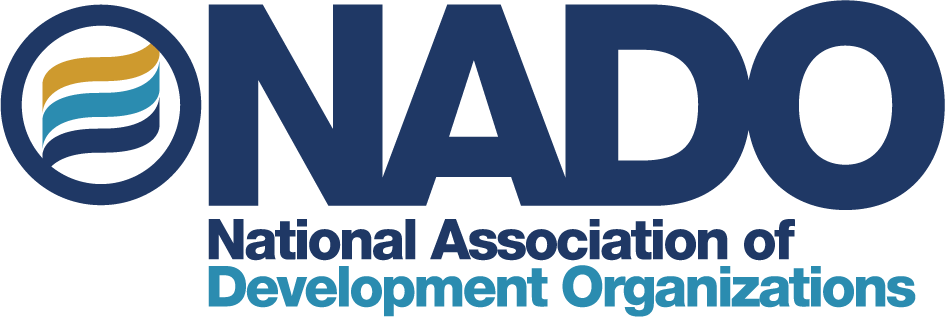This page catalogues the NADO Research Foundation’s reports and studies on the topic of transportation and economic development from the years 2005 to 2015.
2013 – Revving the Economic Engine: South Carolina’s Auto Cluster:
Over the preceding 30 years, South Carolina had developed a flourishing, globally competitive automotive and ground transportation cluster which is a major engine of economic growth in the state. This report explored the state’s reputation as being competitive in economic development circles and having significant transportation facilities, including the deepwater Port of Charleston, inland port in Greer that opened in later 2013, and rail and interstate corridors providing connections within the state and to nearby cities such as Atlanta and Charlotte.
The PDF report can be read here.
2012 – Aligning Strategies to Maximize Impact: Case Studies on Transportation and Economic Development:
This report featured 10 case studies from 11 states, where regional planning and economic development organizations were taking steps to coordinate planning processes and investment strategies, partner with new entities to improve outreach and and implementation, document progress through metrics, and communicate results in an engaging way. In particular, this report examined transportation planning through the lens of economic development and the Comprehensive Economic Development Strategy (CEDS), a regional economic development plan.
The PDF report can be read here.
2012 – The Rise of the Greek Yogurt Industry in Central New York:
This report covered the emergence of the Greek Yogurt industry in Central New York, with 1,400 new jobs created by yogurt makers Chobani and FAGE USA. Regardless of their differing origins, both firms, and others entering the field, rely on access to transportation and logistics systems to move goods, services, and people in a timely and cost-effective manner. As the report says, “If ‘location, location, location’ is the mantra of real estate, ‘location, transportation, and logistics’ is the driving force in economic development.”
The PDF report can be read here.
2012 – Freight Transportation and Economic Development: Planning for the Panama Canal Expansion:
At the time of this report, the Panama Canal was scheduled to complete an expansion project in 2014, allowing larger ships to pass through the canal and accordingly bring more freight from Asia to the U.S. East and Gulf Coasts. The report provided an overview of some possible effects of the canal expansion on the U.S., as well as some of the efforts of coastal ports and inland regions to capitalize on economic opportunity that may be offered by a change in freight patterns.
The PDF report can be read here.
2011 – Inland Ports: Linking Freight and Regional Economic Development:
This report highlighted examples where intermodal facilities connecting rail and truck streamline freight movement and position their regions for economic impact. At the time of the report, Facilities in Auburn, Maine; Rochester, Illinois; and Bismarck, North Dakota were creating new opportunities for economic development and job creation in the field of distribution and logistics.
The PDF report can be read here.
2011 – Regional Approaches to Sustainable Development:
Regional development organizations (RDOs) working in all types of communities across the country are designing and implementing strategies to create stronger, more dynamic, more resilient regional economies that are based on quality of place. Featuring case studies from California, Michigan, North Carolina, and Utah, this report highlighted the opportunities available to RDOs to undertake sustainable development initiatives using a systems-based approach.
The PDF report can be read here.
2011 – Exploring the Role of Regional Transportation Projects as Rural Economy Drivers:
With case studies in Alabama, Oregon, and Vermont, this report explored regions where public transit played a role in connecting employees to work, getting people to services, and revitalizing downtown areas. Through partnerships at the local and regional level, regional planning and development organizations were and are facilitating improved mobility, which in turn supports the regional economy.
The PDF report can be read here.
2010 – Regional Food Systems Infrastructure:
This report described the role of RDOs in supporting regional farmers, processors and distributors. Promoting small- and mid-size agricultural operations offers numerous benefits to a region, including sustained economic development, protection for regional farmland and rural landscapes, and reduced vehicle miles traveled (VMT) and greenhouse gas emissions. By developing partnerships with area farmers and other stakeholders, RDOs can help to develop regional food systems infrastructure that will support economic development initiatives and other program goals.
The PDF report can be read here.
2010 – Integrating Land Use, Transportation and Economic Development in Pennsylvania:
Pennsylvania initiated a statewide effort to integrate land use, transportation and economic development at the regional level through a process known as LUTED, under which the state’s regional planning and development organizations developed regional visions and strategies to identify projects related to multiple issue areas. This proceedings report described the background of regional planning and the LUTED process in Pennsylvania, and provides case studies of how the three organizations observed on a NADO RF hosted Peer Exchange approached the integration of land use, transportation and economic development planning in their regions.
The PDF report can be read here.
2010 – Natural Gas Drilling:
This issue brief examined the natural gas drilling boom in the U.S. and associated economic opportunities and infrastructure challenges ca. 2011, including strains on local transportation networks and other types of infrastructure as well as environmental impact concerns. The publication explored how regional development organizations in Pennsylvania and New York were addressing these challenges, and what sort of measures could be taken to ensure that natural gas extraction brings the best possible benefits to regions and communities, while minimizing potential negative effects.
The PDF report can be read here.
2009 – Role of Transportation Planning in the Comprehensive Economic Development Strategy Process: A Nationwide Scan:
This research report identified the extent and methods used by economic development districts to incorporate transportation plans, projects, stakeholders, and issues into the regions’ comprehensive economic development strategy (CEDS) documents. The research team also identified and described promising practices and case studies.
The PDF report can be read here.
2008 – Arrowhead Region: A Portfolio of Transportation Assets:
This report showcased the role of the Arrowhead Regional Development Commission in supporting the Duluth-Superior Metropolitan Interstate Council (the MPO for the metro area), in partnership with the Northwest Regional Planning Commission in Wisconsin, and the Northeast Minnesota Area Transportation Partnership, the rural-based transportation planning body for an eight-county region. It also features an interview with Congressman James L. Oberstar (D-MN), formerly Chairman of the U.S. House Transportation and Infrastructure Committee.
The PDF report can be read here.
2008 – Short Line Railroads: Saving an Endangered Species of Freight Transport:
This report highlighted the action of the Southern Tier West Regional Planning and Development Board and the SEDA-Council of Governments to form rail authorities and save short rail lines that would have otherwise been abandoned. At the time of the report, these lines continued to be critical for economic development, with rail infrastructure being central to creating and retaining jobs in each region.
The PDF report can be read here.
2007 – Southeast Tennessee Transportation: Positioning the Chattanooga Region in the Global Economy:
This report explored the Chattanooga region’s multi-modal transportation system and its role in retaining the region’s economic competitiveness in the global marketplace. It describes the economic significance that both current and proposed transportation corridors play in moving goods and people across and through the region in an efficient and safe manner. It also demonstrates the importance of regionally-based strategies, intergovernmental and regional cooperation among state and local officials, and the need to link urban and rural portions of a region.
The PDF report can be read here.
2007 – Regional Alliance Pulls Toyota to Tupelo: PUL Alliance Efforts Attract New Jobs:
The NADO Research Foundation’s Center for Transportation Advancement and Regional Development released this special report examining the multi-county alliance and transportation infrastructure that made the Northeast Mississippi region attractive to Toyota, which announced plans to build an automotive assembly plant there in early 2007.
The PDF report can be read here.
2007 – Ethanol Production Impacts Transportation System:
The NADO Research Foundation’s Center for Transportation Advancement and Regional Development released this news issue brief examining the regional and local transportation impacts of the ethanol fuels industry.
The PDF report can be read here.
2007 – Transit and Air Quality Make a Connection:
This issue paper highlighted how many regional development organizations at the time were increasingly looking to public transportation as a way to resolve commuting challenges in their region, not only impacting rural and small metropolitan communities economically, but impacting on the environment.


